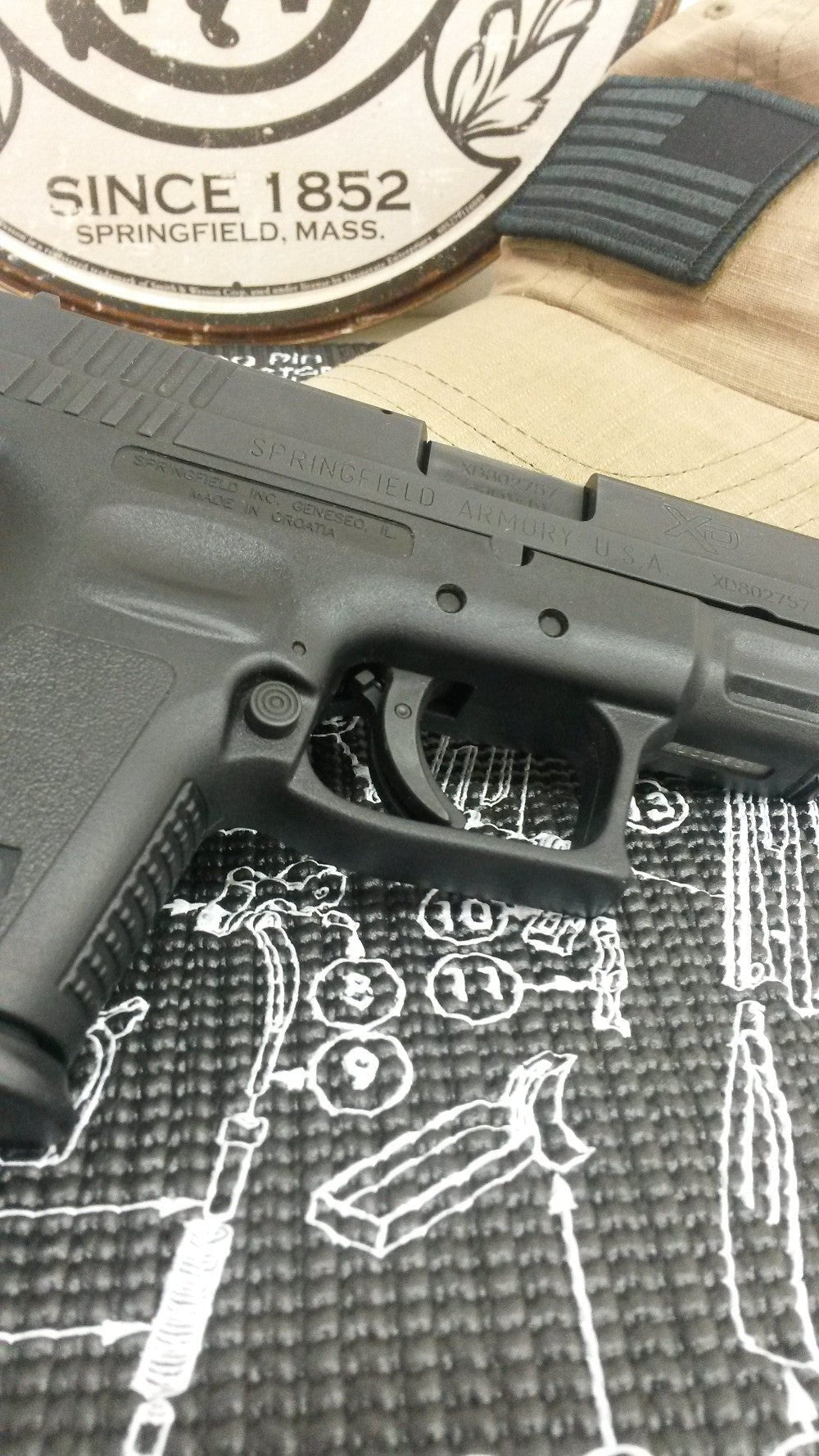Trigger Work
What is it?
Every trigger is as different from one another as your finger prints. We need to become intimately familiar with it. Especially on our EDC (Everyday Carry) piece.
Some things to think about when identifying the characteristics of your trigger.
- Single stage vs Double Stage. Does your trigger feel the same all the way through the trigger pull or does it change just before the firing pin is dropped?
- Slack - How far do you have to pull the trigger to take the "free play" out of the trigger?
- Effort - How much effort does it take to take up the slack? How much effort does it take to get to the pressure wall and "break the trigger"? This is the point where the firing pin drops and the gun fires.
- Reset - How far after firing must you allow the trigger to travel in order to reset it?

Springfield XD Subcompact
Dry Fire Drill
Dry Fire Drill for Trigger Draw
Level - Beginner to Intermediate
Safety! See link for dry fire safety
Time Period - 20 Repetitions per day for a week. This drill will take at most 10 minutes per day
Drill -
With an unloaded and safe firearm aim as you normally would. Put your finger in the trigger guard and begin to slowly pull the trigger making mental notes of all of the characteristics of the trigger. Pay particular attention to how far you must pull trigger to take up slack, how much effort that takes. Pause on the trigger once the slack is taken out to get a good feel of that point and the pressure needed to maintain it. When ready and you have a clear and steady sight picture slowly depress the trigger further until you get the dry fire click. DO NOT IMMEDIATELY RELEASE THE TRIGGER. Completely releasing the trigger is an unneeded movement. Instead rack the slide for semi autos and then slowly release the trigger until you feel/hear a click. This is the reset point of you trigger.
In a real life situation, after firing your first round you'll still have several more in the chamber. We want to get used to not immediately releasing the trigger. You want to slowly release until the trigger resets. You are then ready to immediately fire again. The advantage here is subsequent shots from this point on the trigger are likely to be more accurate. The first time you pull the trigger back you are taking the trigger through a lot of empty space before hitting that pressure wall. It's very easy then (especially for beginners, or if your trigger pulling pulling motion isn't smooth and consistent) to accidentally pull your shot to the left or right. However, if you don't totally let go of the trigger and instead take it just back to the reset point, the next time you pull it you won't have to take the trigger through all that slack and to the pressure wall; the gun should fire immediately.
1.3. Range Drill
Range Drill for Trigger Draw
Level - Beginner to Intermediate
Safety! See link for live fire safety
Time Period - 20 Repetitions per day for a week. This drill will take at most 10 minutes per day
Drill -
With loaded firearm aim as you normally would. Put your finger in the trigger guard and begin to slowly pull the trigger making mental notes of all of the characteristics of the trigger. Pay particular attention to how far you must pull trigger to take up slack, how much effort that takes. Pause on the trigger once the slack is taken out to get a good feel of that point and the pressure needed to maintain it. When ready and you have a clear and steady sight picture slowly depress the trigger further until the gun fires. DO NOT IMMEDIATELY RELEASE THE TRIGGER. Completely releasing the trigger is an unneeded movement. Instead slowly release the trigger until you feel/hear a click. This is the reset point of you trigger. Begin slowly depressing the trigger again. Note, that on followup shots you will not need to take up the slack as long as your performing the reset correctly.
If you're used to just letting go after the shot, like many people are, (I used to be one of them) then it can take awhile to adjust. Just keep working at it, this is a great skill to possess. Pay attention to your shot groupings and the affect this trigger work has on your shooting. Do you notice more consistency in your shooting after going through this trigger work? Many will find that if they shoot 5 shots for example, they'll see their first shot off to the side a bit, while the subsequent shots are more accurately and consistently grouped together. This is due to the lack of slack in the trigger pull and the decreased opportunity to yank your shot to the side.



Share:
The Seated Draw
Finding Your Dominant Eye